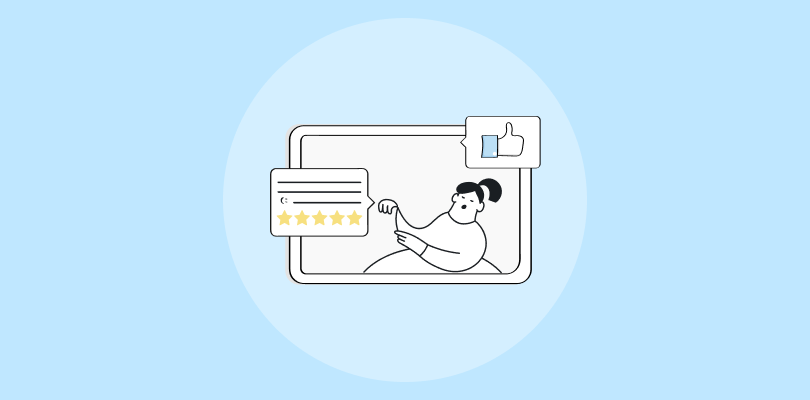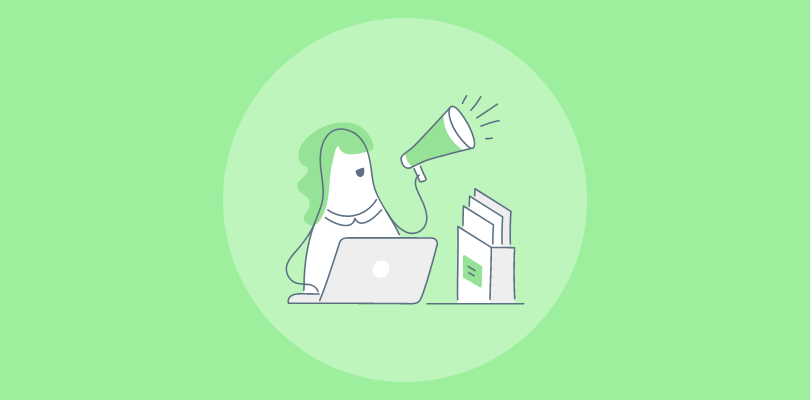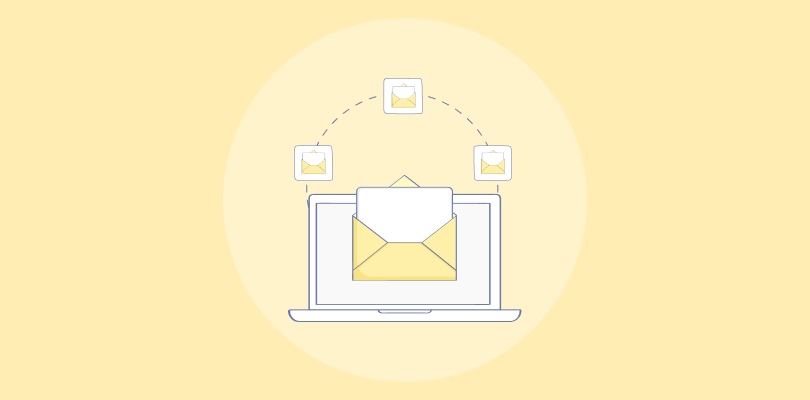For those looking to engage their audience, share expertise, and build meaningful connections through webinars, webinar planning is vital. It’s a means to engage directly with their targeted audience, generate high-quality leads, and ultimately drive sales.
By carefully planning a webinar, including its content, timing, and promotional strategy, you can address the pain point of low engagement and conversion rates.
But do you have a webinar planning checklist for this?
Don’t worry. In this post, I’ll show you how to plan a webinar strategically and present some of the best practices.
Hang on till the end.
What is Strategic Webinar Planning?
Strategic webinar planning is the process of designing, organizing, and executing webinars with a clear, purposeful strategy in mind.
Over the years, webinars have become an indispensable tool for businesses, educators, and organizations, and you need definite plans to achieve optimal results out of webinars.
The strategic aspect involves a series of steps and considerations to ensure a webinar effectively achieves its intended goals.
Here’s an overview of what such strategies typically entail:
- Target Audience Identification
- Objective Setting
- Content Development
- Platform Selection
- Promotion and Marketing
- Rehearsal and Technical Preparation
- Execution
- Follow-up and Analysis
A webinar planning strategy is all about ensuring that every aspect of the webinar is thoughtfully considered and aligned with the overarching goals, whether it’s educational, marketing, or community building. This calculated approach helps maximize the impact of the webinar and ensures it delivers value to both the host and the audience.
How to Create a Winning Webinar Plan

““A good plan, violently executed now, is better than a perfect plan next week.”




So, as George already defined the importance of planning at the right time, let me add that creating a successful webinar involves careful planning and execution. Let me give you a webinar planning checklist to go about it.
Define Your Objectives
Defining clear objectives is the cornerstone of a successful webinar plan. Your objectives determine the direction of the webinar, the target audience, and the metrics for measuring success.
Objectives can vary: some webinars aim to generate leads, while others focus on educating an audience, building brand awareness, or nurturing existing customers.
Carefully articulated objectives keep your team aligned and guide every decision, from selecting the topic to creating the call to action.
How to:
- Identify your primary purpose: Decide whether your webinar’s focus is lead generation, education, sales, or customer retention.
- Understand your audience’s needs: Research their pain points and expectations to align your objectives with their interests.
- Set specific goals: Define outcomes, such as “gain 300 qualified leads” or “achieve a 50% post-webinar conversion rate.”
- Determine key performance indicators (KPIs): Metrics like attendance rate, engagement, or sales enable measurement of success.
- Align with business objectives: Ensure your webinar supports your broader marketing and organizational strategies.
| Pro Tip: Break down larger objectives into smaller milestones to track progress and identify quick wins during the planning process. |
Choose Your Topic and Speaker
Your webinar’s topic and speaker significantly influence its success. The topic should resonate with your audience, offering solutions to their problems or actionable insights.
A vague or irrelevant topic can deter registrations. Meanwhile, the speaker acts as the face of your webinar, and their expertise and presentation style can captivate the audience.
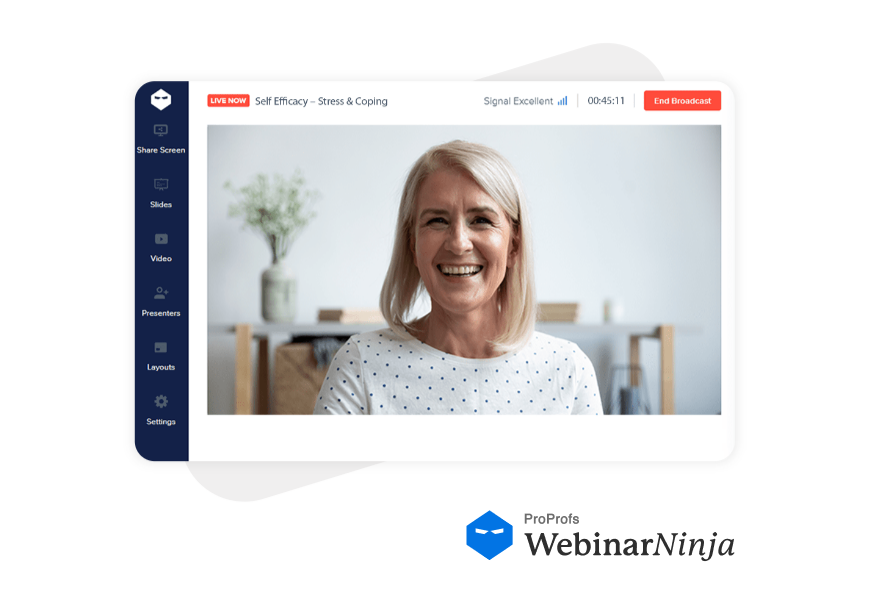

Pairing a strong topic with a credible speaker boosts audience trust and participation.
How to:
- Survey your audience: Use polls, social media, or email campaigns to identify the topics your audience finds most valuable.
- Research trending topics: Monitor industry news, forums, or competitors to uncover relevant themes.
- Collaborate with subject matter experts: Select speakers who are knowledgeable, engaging, and relatable to your audience.
- Balance expertise and accessibility: Ensure the topic is deep enough for experts but accessible to novices.
- Craft a compelling title: Focus on clarity and benefits, e.g., “10 Ways to Boost ROI Using Data-Driven Marketing.”
| Pro Tip: Pair an industry influencer with an internal expert to enhance credibility while showcasing your brand’s expertise. |
Determine Webinar Date & Time
Choosing the right date and time is pivotal to attracting maximum attendees. Poor timing can clash with your audience’s work schedules, holidays, or even industry events, reducing attendance.
Factors such as your audience’s geographic location, time zones, and daily habits play a crucial role. Timing impacts registration, engagement, and even on-demand views.
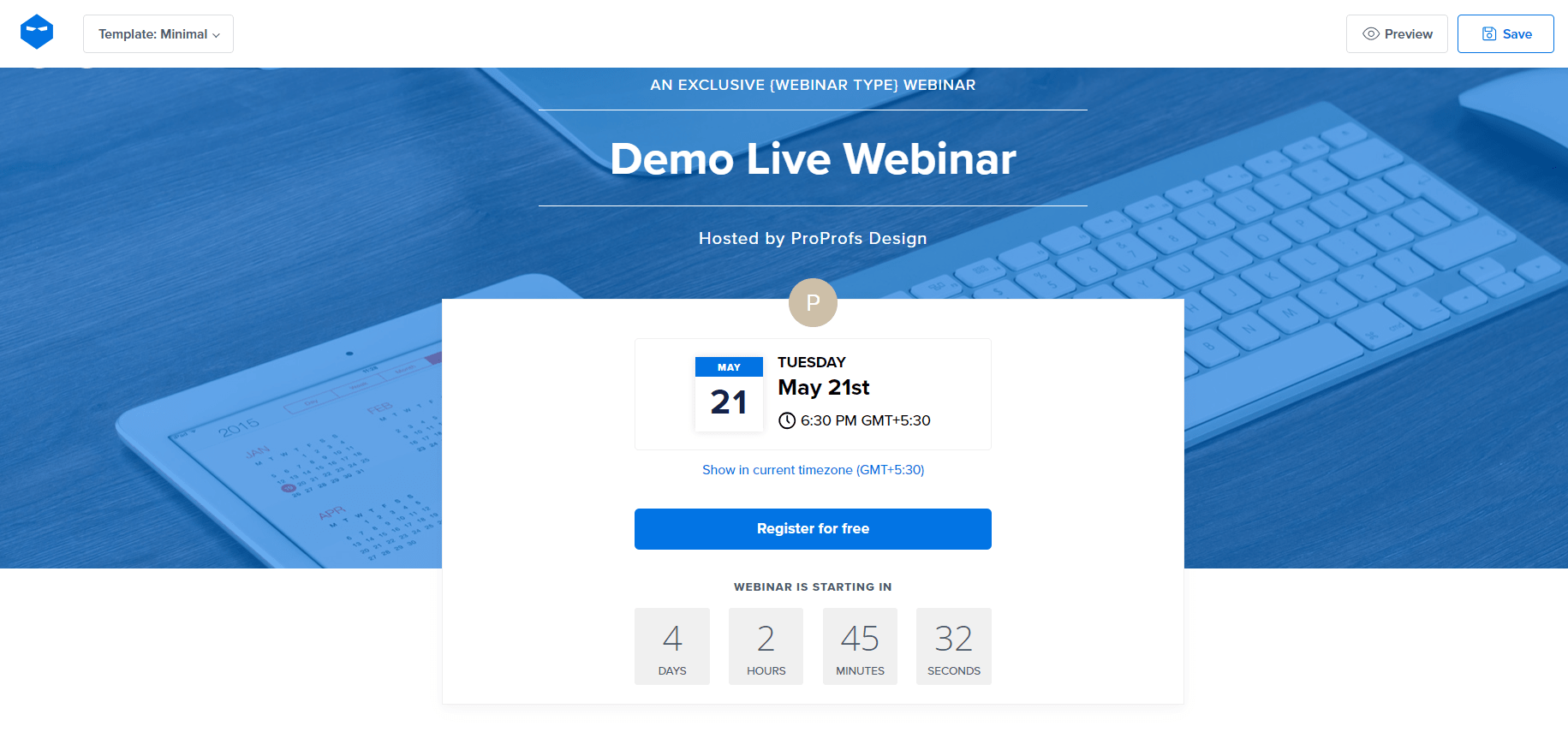

Analyzing your audience’s availability ensures a convenient schedule that works for most participants.
How to:
- Analyze audience demographics: Use survey data or email analytics to understand when your audience is most active.
- Choose a midweek day: Webinars scheduled on Tuesdays, Wednesdays, or Thursdays generally see higher attendance.
- Account for time zones: For global audiences, select a time slot convenient for multiple regions, such as late mornings or early afternoons.
- Check for conflicts: Avoid scheduling your webinar during holidays, weekends, or major industry events.
- Offer flexible options: Provide an on-demand recording for those unable to attend live.
| Pro Tip: Use scheduling tools like Google Analytics or email engagement data to identify when your audience is most active online. |
Select a Webinar Platform
Your webinar platform is the backbone of your event. A good platform ensures a seamless experience for both presenters and attendees.
Choosing the right one requires evaluating features such as audience capacity, engagement tools, and integrations with other software.
You can use platforms like WebinarNinja and Zoom Webinars that cater to different needs, so it’s essential to find one that aligns with your objectives. Consider factors like ease of use, reliability, and customer support.
How to:
Choosing the right webinar platform can make or break your online event. Here are some crucial features to look for when making your decision:
- Effortless Webinar Setup: The platform should make it easy to schedule, create, and launch webinars with an intuitive interface and straightforward process. No technical hurdles for you or your attendees!
- Versatile Webinar Types: Support for a variety of webinar formats like live, automated, series, and hybrid webinars to cater to different content strategies and audience engagement goals.
- High-Quality Video and Audio: Crystal-clear video and audio are non-negotiable. Look for platforms offering HD video streaming and stable audio to ensure a professional and engaging experience.
- Interactive Tools: Boost audience participation with features like live chat, Q&A sessions, polls, and interactive whiteboards. The more engagement, the better!
- Customizable Branding: Reinforce your brand identity by tailoring the webinar environment with your logo, colors, and custom registration pages.
- Marketing and Promotion Features: Integrated tools for email marketing, landing page creation, and social media promotion to help you maximize webinar attendance.
- Detailed Analytics and Reporting: Track key metrics like registrations, attendance rates, engagement levels, and post-webinar actions to measure success and optimize future events.
- Reliable Customer Support: Prompt and helpful customer support is essential in case of technical issues or questions. Look for platforms offering multiple support channels like email, phone, and live chat.
- Mobile-Friendly Experience: Ensure your webinars are accessible to attendees on any device, whether desktop, laptop, tablet, or smartphone.
- Integrations with Other Tools: Seamless integrations with popular marketing automation, CRM, and other business tools to streamline workflows and data management.
| Pro Tip: Select a platform with built-in recording and analytics to simplify post-webinar evaluation and sharing. |
Promote Your Webinar
Effective promotion ensures your webinar reaches its target audience and drives registrations. Relying on one promotional channel isn’t enough; you need a multi-channel strategy to maximize visibility.
Early promotion builds awareness, while reminders closer to the event drive last-minute sign-ups. So, ensure your messaging highlights the value attendees will gain from the webinar.
Use engaging visuals, social proof, and urgency to boost interest.
How to:
- Design a landing page: Make it visually appealing and include essential details like the topic, date, time, and registration form.
- Use email marketing: Send personalized invitations and follow-ups to your mailing list.
- Leverage social media: Share posts, stories, and paid ads targeting your ideal audience.
- Collaborate with partners: Ask your speaker or partners to promote the event to their networks.
- Create a content calendar: Schedule posts, countdowns, and reminders leading up to the event.
| Pro Tip: Include testimonials or previews of past successful webinars in your promotional material to build trust. |
Prepare Your Content
Your webinar content determines the value you deliver to attendees. It should be engaging, informative, and structured to hold attention throughout.
High-quality visuals, interactive elements, and clear messaging are essential. Remember, your content should align with your objectives and be tailored to your audience’s level of knowledge.
Whether it’s a presentation, live demo, or Q&A, preparation is key to a polished delivery.
How to:
- Outline your key points: Start with an introduction, followed by the main content, and conclude with a strong CTA.
- Incorporate storytelling: Use anecdotes or case studies to make your content relatable.
- Design professional visuals: Use tools like Canva or PowerPoint to create high-quality slides.
- Include interactive elements: Use polls, quizzes, or live chat to engage attendees.
- Prepare additional resources: Create handouts or guides attendees can download during or after the webinar.
| Pro Tip: Keep text minimal on slides and focus on visuals or bullet points to maintain audience attention. |
Rehearse Your Webinar
Rehearsing your webinar ensures a smooth and confident delivery. Practice helps presenters familiarize themselves with the content, refine timing, and troubleshoot technical issues.
Simulate the actual webinar environment during rehearsals to ensure everything runs as planned. The more prepared you are, the more professional your webinar will feel to attendees.
How to:
- Do a technical check: Test your microphone, camera, internet connection, and any other equipment.
- Run through the presentation: Practice each section, including transitions and interactive elements.
- Time your session: Ensure your webinar fits within the planned duration, leaving time for Q&A.
- Simulate audience interaction: Test polls, chat functions, and Q&A features to ensure they work seamlessly.
- Record your rehearsal: Review the recording to identify areas for improvement.
| Pro Tip: Involve a colleague or co-host in the rehearsal to provide feedback and ensure clarity in your messaging. |
Host the Webinar
Hosting the webinar is where all your preparation comes to life. Focus on engaging your audience, maintaining a professional tone, and delivering value.
Start by welcoming attendees and providing an overview of the session. During the webinar, keep the energy up and encourage interaction. A strong conclusion with a clear call to action helps you achieve your objectives.
How to:
- Start promptly: Begin on time to respect your attendees’ schedules.
- Set expectations: Outline the agenda and let participants know when they can ask questions.
- Engage consistently: Use interactive elements like polls or shoutouts to keep attendees involved.
- Monitor the chat: Address comments or questions to create a more interactive experience.
- Conclude effectively: Summarize key points and provide a clear next step, such as signing up for a service or downloading a resource.
| Pro Tip: Record the session and offer it as an on-demand resource for those who couldn’t attend live. |
Here’s a webinar planning checklist that you can access whenever starting a new task. Make a copy of it and keep it safe forever.
Webinar Planning Best Practices
Let’s now dive into some of the best practices for webinar planning.
These tried and tested approaches will serve as as webinar planning template to help improve your webinars’ efficiency and effectiveness, besides helping you standardize the process and gain a competitive advantage.
Leverage Storytelling & Narrative
Storytelling is a powerful tool in communication that engages audiences at an emotional level and makes complex information more relatable.
By weaving your webinar content into a compelling narrative, you can capture attention more effectively and make the information memorable. This approach breaks down barriers and makes technical or dry topics interesting.
A strong narrative with a clear beginning, middle, and end can significantly enhance audience engagement by making the content relatable and emotionally resonant.
Airbnb has effectively used storytelling in its webinars to share hosts’ experiences and journeys. This approach not only engaged the audience but also helped to humanize the brand and deepen audience connection.
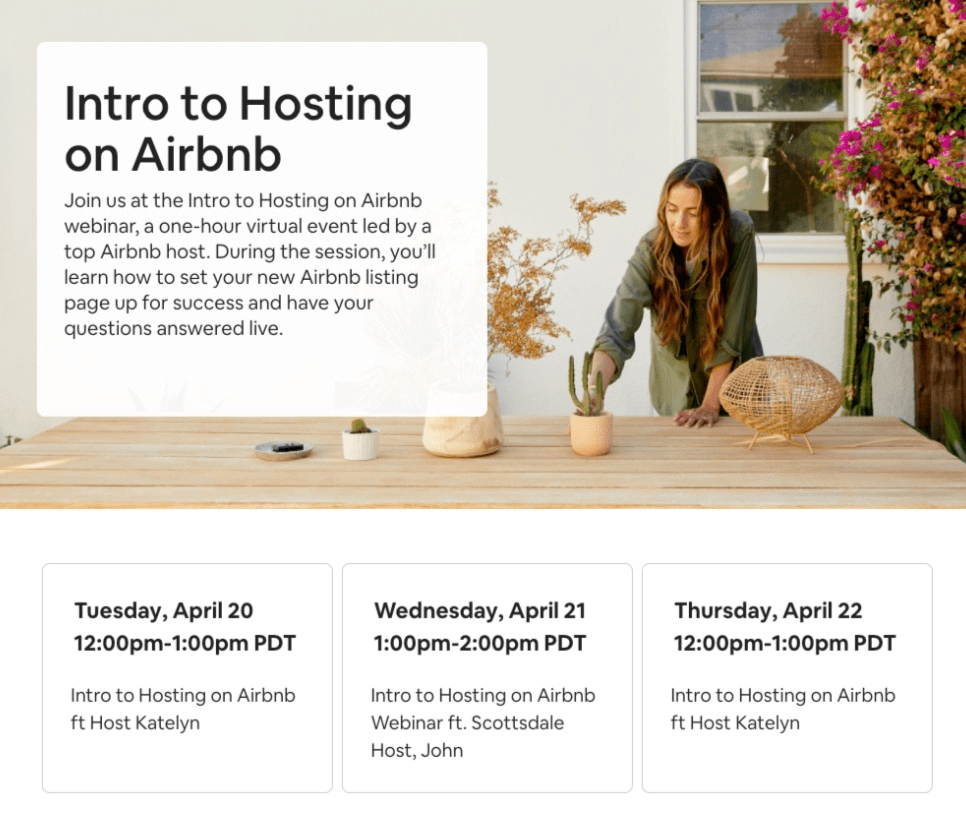

(Image Source: Rental ScaleUp)
Use Engagement Techniques
Engagement is key to a successful webinar. Traditional webinars often rely on a one-way flow of information, which can lead to audience disengagement.
By incorporating interactive techniques such as live polls, quizzes, and breakout rooms, you transform passive viewers into active participants. This not only keeps the audience engaged but also provides immediate feedback and insights into their preferences and understanding.
Interactive engagement with the audience will lead to better retention of information and a more enjoyable experience.
For example, Duolingo frequently hosts webinars on language learning techniques by utilizing interactive quizzes and polls to make the learning process fun and engaging for participants.
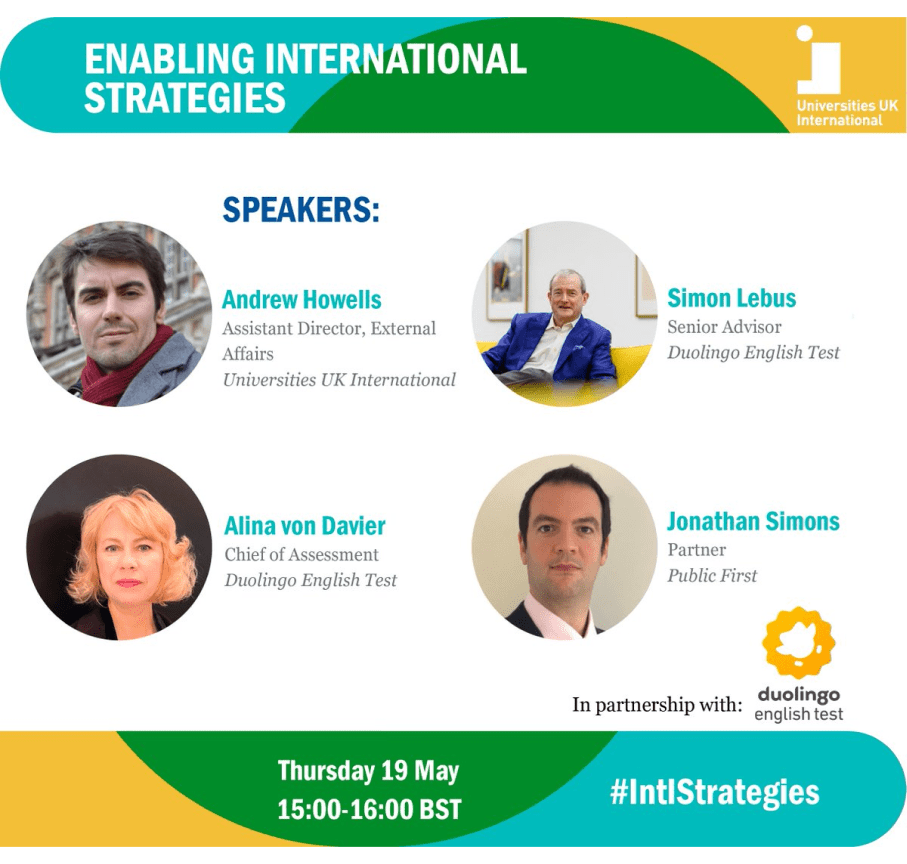

(Image Source: Twitter)
Additional Information: Plan these interactive elements ahead of time but be flexible enough to adjust based on the flow of the webinar and the audience’s responsiveness.
Incorporate Visualization & Multimedia
People remember 65% of what they see 3 days later than 10% of what they hear.
The effective use of visual aids and multimedia can significantly enhance the learning and engagement experience in webinars. This approach integrates relevant images, videos, infographics, and live demonstrations into your presentation.
Visual content can help clarify complex information, maintain audience interest, and cater to different learning styles. By diversifying the types of content you present, you make your webinars more accessible and engaging for a wider audience.
Scenario: A digital marketing agency is planning a webinar on the latest trends in social media marketing. Understanding that the topic involves a lot of data and case studies, they decided to incorporate a variety of multimedia elements to make the content more digestible and engaging.
For example, Moz, a company specializing in SEO, regularly uses webinars to educate its audience on SEO strategies. Their webinars often include a mix of live screen shares, videos demonstrating tools in action, and slides rich with charts and graphs.
This multimedia approach helps demystify SEO concepts for their audience, making complex data and strategies easier to understand.
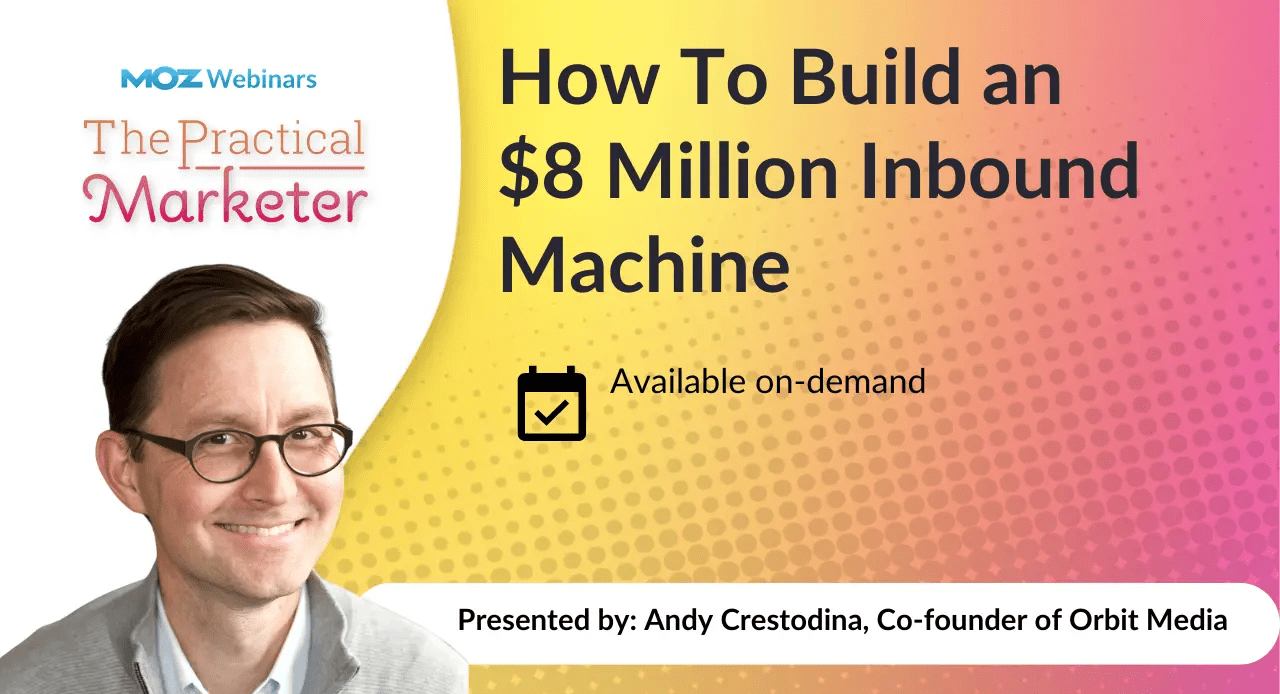

(Image Source: Moz)
Additional Information: When incorporating visuals and multimedia, make sure that the content is directly relevant to your topic and adds value to your presentation. Overloading your webinars with unnecessary visuals can distract from the key messages.
Plan your visual aids to complement and enhance your narrative, not overshadow it. Always test your multimedia elements before the webinar to avoid technical issues during the live session.
Conduct Post-Webinar Follow-Ups
Audience engagement doesn’t end when a webinar ends. Post-webinar follow-ups are crucial for maintaining a connection with your audience, gathering feedback, and providing additional value. This can include sending resources related to the webinar topic, offering a recording of the session, or inviting feedback through surveys.
Such strategies enhance the overall experience and help convert attendees into customers or repeat attendees.
Look at this example scenario: A health and wellness coach hosted a webinar on stress management techniques and wanted to keep the audience engaged after the event.
He developed a follow-up strategy to continue the conversation with his attendees. He sent a thank-you email, a survey to gather feedback, additional resources related to the webinar topic, and invitations to future webinars.
Pro Tip: Tailor your follow-up content based on the interaction during the webinar to make it as relevant and valuable as possible to your audience.
Optimize for On-Demand Viewing
Not everyone who is interested in your webinars will be able to attend the live sessions.
By optimizing your webinars for on-demand viewing, you can extend their lifespan and reach.
This involves ensuring the content remains relevant and engaging outside of the live context and making it easily accessible post-event.
On-demand viewing can significantly increase your webinars’ impact and audience size over time.
TED Talks are a prime example of content initially presented to a live audience. Still, they have found a significantly larger audience through on-demand viewing, thanks to their engaging, evergreen content.


(Image Source: Moxie Institute)
Remember: Record your webinars and make them easily accessible for on-demand viewing. Ensure the content is structured in a way that remains relevant and engaging, even when not viewed live.
Provide additional resources alongside your recordings, such as downloadable slides or a PDF summary, to enhance the on-demand viewing experience.
Crafting a successful webinar goes beyond just presenting information; it’s about creating an engaging, memorable experience that extends beyond the live event.
By incorporating storytelling, interactive elements, strategic follow-ups, and guest speakers and optimizing for on-demand viewing, you can significantly enhance the impact of your webinars.
Remember to continuously seek feedback and iterate on your approach to keep improving with each webinar you host.
Real-Life Success Story
| Discover how a financial planner-turned-independent marketing consultant uses webinars to build his agency. |
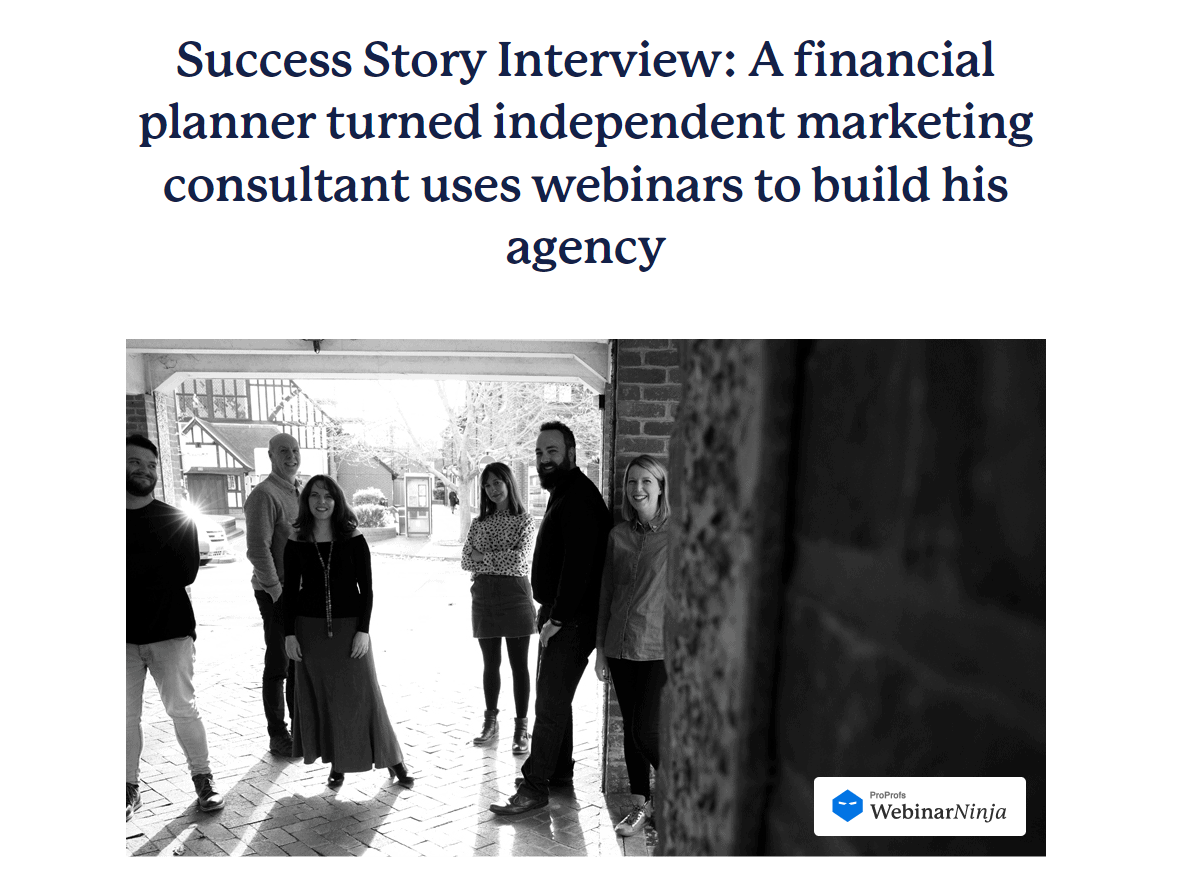

Start Planning Your Webinars Today
Webinars stand as a cornerstone, blending education, networking, and brand advocacy into a single, impactful event.
This guide has walked you through how to plan a webinar and even have clarity in goals, meticulous audience targeting, engaging content creation, and robust promotional strategies. It has also touched upon the significance of leveraging technology and post-webinar follow-ups.
As I conclude, let me tell you this: webinar planning is not just about orchestrating a successful event but also about enhancing brand visibility and generating tangible outcomes.
If you need help implementing these best practices, look no further than WebinarNinja. It’s an all-in-one platform with built-in tools and features to host amazing learning experiences.
Want to host a webinar for free?
Use WebinarNinja to teach, improve marketing, and grow your sales.





